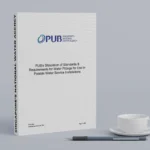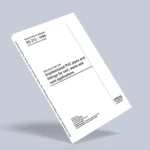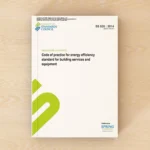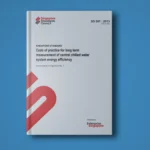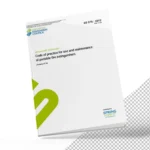SS 530:2014 – Code of Practice for Energy Efficiency Standard for Building Services and Equipment is the Singapore Standard that sets out the requirements for the energy-efficient design, installation, and operation of building services and equipment. This standard aims to reduce energy consumption and improve the energy performance of buildings.
Key Aspects of SS 530:2014
1. Scope and Application
- Scope: This standard covers the energy efficiency requirements for various building services and equipment, including HVAC systems, lighting, electrical systems, and water heating systems.
- Application: Applicable to new and existing buildings, including residential, commercial, and industrial facilities.
General Requirements
2. Energy Efficiency Design
- Integrated Design Approach: Promote an integrated design approach that considers energy efficiency from the initial design stage through to operation.
- Performance Targets: Establish energy performance targets and benchmarks for different types of buildings and services.
HVAC Systems
3. Heating, Ventilation, and Air Conditioning (HVAC)
- System Efficiency: Ensure HVAC systems are designed and installed to achieve high efficiency.
- Control Systems: Implement advanced control systems to optimize the operation of HVAC equipment based on occupancy and environmental conditions.
- Maintenance: Regularly maintain HVAC systems to ensure they operate at peak efficiency.
Lighting Systems
4. Lighting
- Efficient Lighting Design: Use energy-efficient lighting designs, including the selection of efficient light sources and luminaires.
- Control Systems: Install lighting control systems such as occupancy sensors, daylight sensors, and programmable timers to reduce energy consumption.
- Lighting Levels: Ensure lighting levels are appropriate for the intended use while avoiding over-illumination.
Electrical Systems
5. Electrical Power Systems
- Energy-Efficient Equipment: Use energy-efficient electrical equipment, including motors, transformers, and distribution systems.
- Power Factor Correction: Implement power factor correction measures to improve the efficiency of electrical systems.
- Load Management: Use load management techniques to reduce peak demand and overall energy consumption.
Water Heating Systems
6. Water Heating
- Efficient Water Heaters: Select and install energy-efficient water heaters.
- Insulation: Ensure proper insulation of hot water pipes and storage tanks to minimize heat loss.
- Temperature Control: Implement temperature control systems to optimize water heating efficiency.
Renewable Energy Integration
7. Renewable Energy Systems
- Solar Energy: Integrate solar thermal and photovoltaic systems to reduce reliance on non-renewable energy sources.
- Other Renewable Sources: Consider other renewable energy sources such as wind, biomass, and geothermal energy.
Monitoring and Verification
8. Energy Monitoring
- Metering: Install energy meters to monitor the consumption of different building services and equipment.
- Energy Management Systems: Use energy management systems to analyze consumption patterns and identify opportunities for improvement.
9. Verification and Reporting
- Performance Verification: Conduct regular performance verification to ensure compliance with energy efficiency standards.
- Reporting: Maintain records of energy consumption and efficiency measures, and report on performance periodically.
Compliance and Certification
10. Compliance
- Regulatory Compliance: Ensure compliance with relevant local regulations and standards.
- Industry Standards: Follow industry best practices and guidelines for energy-efficient design and operation.
11. Certification
- Certified Professionals: Ensure that design, installation, and maintenance are carried out by certified professionals.
- Building Certification: Obtain certification for buildings that meet energy efficiency standards.
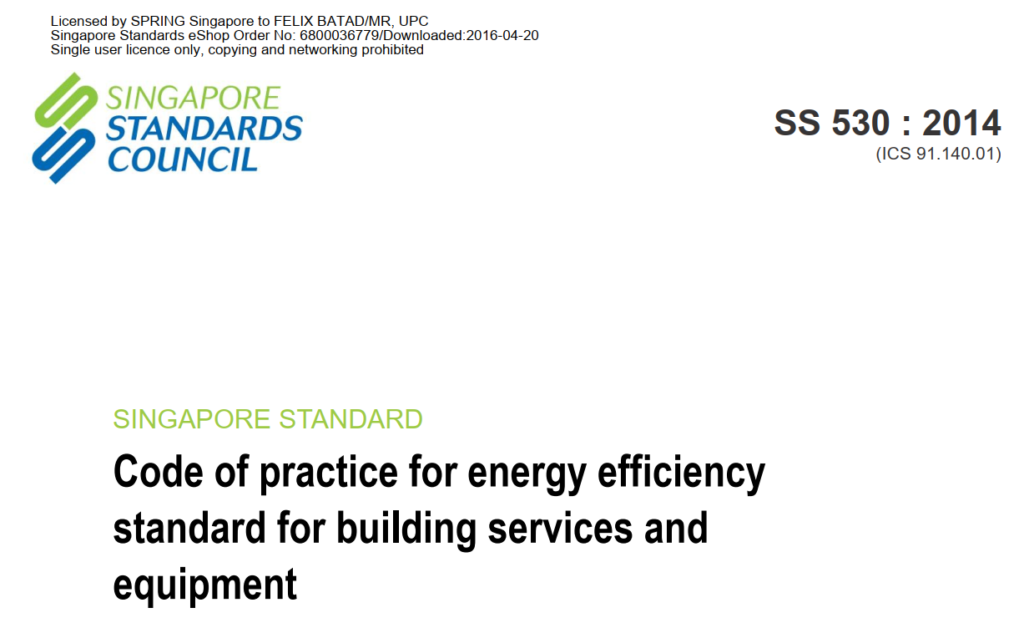
Example Compliance Checklist
| Activity | Frequency | Description |
|---|---|---|
| HVAC System Maintenance | Quarterly | Regular maintenance of HVAC systems to ensure efficiency. |
| Lighting Control Systems | Annually | Install and calibrate lighting control systems. |
| Power Factor Correction | As Needed | Implement power factor correction measures in electrical systems. |
| Water Heater Inspection | Annually | Inspect and maintain water heaters for efficient operation. |
| Energy Monitoring | Continuous | Monitor energy consumption using meters and management systems. |
| Performance Verification | Annually | Verify the performance of building systems against standards. |
| Energy Reporting | Quarterly | Report on energy consumption and efficiency measures. |
Conclusion
SS 530:2014 provides comprehensive guidelines for enhancing the energy efficiency of building services and equipment. By adhering to this standard, building owners and operators can achieve significant energy savings, reduce operational costs, and contribute to environmental sustainability. For detailed procedures and specific requirements, refer to the full SS 530:2012 document and consult with professionals experienced in energy-efficient building design and operation.
Note: All Password are [“salaimep” or “salaimep.com”]
Download |OneDrive, Google Drive
Also Download – SS 553:2016 ACMV in Building PDF Download

